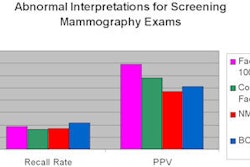A new data analysis software tool developed at Montefiore Medical Center in New York City is helping clinicians improve the quality of care by enabling them to mine data in electronic medical records faster than previously possible.
Radiologists have found the software program, called Clinical Looking Glass (CLG), useful for a variety of applications, including reducing radiation dose by revising their diagnostic algorithms. The software demonstrates how informatics can be used to improve clinical treatment and its delivery process.
Clinical Looking Glass enables a single clinician to test hypotheses that would have been infeasible due to research time required and related costs, thanks to the data mining and analysis capabilities of the software program.
Designed at Montefiore, the teaching hospital for Albert Einstein College of Medicine, Clinical Looking Glass utilizes electronic medical data to check the effectiveness of patient safety measures, conduct quality and outcomes analyses, verify compliance with federal regulations, and expedite clinical research projects.
The power of CLG is that it can rapidly slice and dice datasets in multiple ways. It can identify a cohort of patients within minutes, and qualify them by a specific disease, medication, clinical event, treating physician, time period, age, sex, race, neighborhood, or combination thereof. This capability enables a clinician who generates a hypothesis about a specific disease, for example, to acquire data for analysis in any combination of requirements.
More than 700 physicians, nurses, administrators, and clinical researchers have been trained to use CLG, making an average of 2,800 queries each month to cull data from Montefiore's archive of 10 years of patient records.
"CLG democratizes the research process," explained Dr. Eran Bellin, vice president for clinical IT research and development, who was instrumental in designing the tool. "It is designed for longitudinal assessments and facilitates multidisciplinary research. The real power of CLG is that it allows the building of cohorts. Each individual patient has a unique index date, because CLG keeps track of each patient's start time and end time. This automated capability is very valuable for clinical research."
Research projects are as diversified as measuring the impact of Medicare regulations on the health of rehabilitation patients, verifying the impact of hospitalists on reducing lengthy of stay of stroke and pneumonia patients, and comparing outcomes of embolism patients using two different types of treatment to prevent coagulation.
Patient conditions are identified through ICD-9 codes. In the near future, CLG will also be able to search by CPT codes.
Radiology applications
Radiologists at Montefiore have found CLG to be useful for imaging-specific applications. They have created a database of radiation doses of frequently performed procedures for radiography, CT, nuclear medicine, and interventional cardiology exams published in peer review literature. CLG is able to analyze data from this interface.
Dr. Evan Stein, a fourth-year radiology resident, has been responsible for conducting the majority of queries of CLG for projects with radiologists Dr. Linda Haramati and Dr. E. Stephen Amis, as well as on behalf of other colleagues who haven't yet attended the half-day training course to use the software.
Radiology's first project with CLG was undertaken to validate an initiative to reduce the radiation dose of emergency department patients presenting with symptoms of pulmonary embolism. Stein explained that prior to 2007, emergency physicians would order either a CT pulmonary angiogram (CTPA) or a lung ventilation/perfusion (V/Q) scan. In December 2006, radiologists met with emergency physicians to recommend that these patients first have a chest radiograph, and if the study was normal and the patient could clinically sustain a V/Q scan, that procedure should be ordered instead of a CTPA.
"Approximately 70% of the patients who come to our emergency department with shortness of breath are women," Stein said. "We wanted the emergency physicians to knowingly make an assessment as to whether it was clinically necessary to order the procedure with the highest radiation dose, even though it would be more workflow-efficient."
The radiologists' recommendations had an impact. In 2007, there were 920 CTPA exams ordered to rule out pulmonary embolism, compared with 1,234 exams in 2006. The number of V/Q scans increased from 745 in 2006 to 1,216 in 2007.
"Using CLG, we were able to determine that there was a reduction in radiation dose by 23% for these patients, and for women under the age of 40, the dose reduction was 37%," Stein said.
Impact on outcomes
But what were the outcomes of the patients? Was utilization of the V/Q scan as effective as a CTPA? Stein initiated a CLG query requesting that records of all patients who presented at the emergency department with shortness of breath and who received either a CTPA exam or a V/Q scan be checked for the next 90 days. The objective was to determine if these patients returned again with symptoms of shortness of breath, if they received a new diagnosis of pulmonary embolism, or if they died -- and, if so, from what cause. (CLG also checks Social Security records.)
The analysis revealed that approximately 1% of each patient group who had not been previously diagnosed with a pulmonary embolism returned within 90 days and was positively diagnosed. From this analysis, both emergency physicians and radiologists verified that it was just as safe to send a patient who had a normal chest x-ray for a V/Q scan instead of a CTPA, according to Stein.
CLG also made a large retrospective study of radiation exposure to specific groups of patients feasible, a cohort representing thousands of patients. Radiologists speculated that since 2001, radiation dose exposure from diagnostic imaging procedures had been increasing for patients with coronary artery disease, diverticulitis, hydrocephalous, pulmonary embolism, and renal stones.
Using CLG and the radiation exposure database, they determined that a significant minority of patients were exposed to radiation levels higher than the limits of medical professionals working in radiology and nuclear medicine departments.
At this time CLG doesn't have the capability to enter any information into electronic medical records, but Stein expects that this will be possible in the future. "We look forward to the time when CLG can track the radiation dose exposure of patients by diagnosis or by frequency of high-dose exams, like CT scans, and to be able to provide an alert to our computerized order entry system," he said.
The New York City Department of Health and Mental Hygiene is also using Clinical Looking Glass to perform research studies, and the software is also being tested by the U.S. Department of Defense, according to Bellin.
By Cynthia E. Keen
AuntMinnie.com staff writer
June 29, 2009
Related Reading
New search tool finds the needle in PACS haystack, May 1, 2009
Copyright © 2009 AuntMinnie.com



















